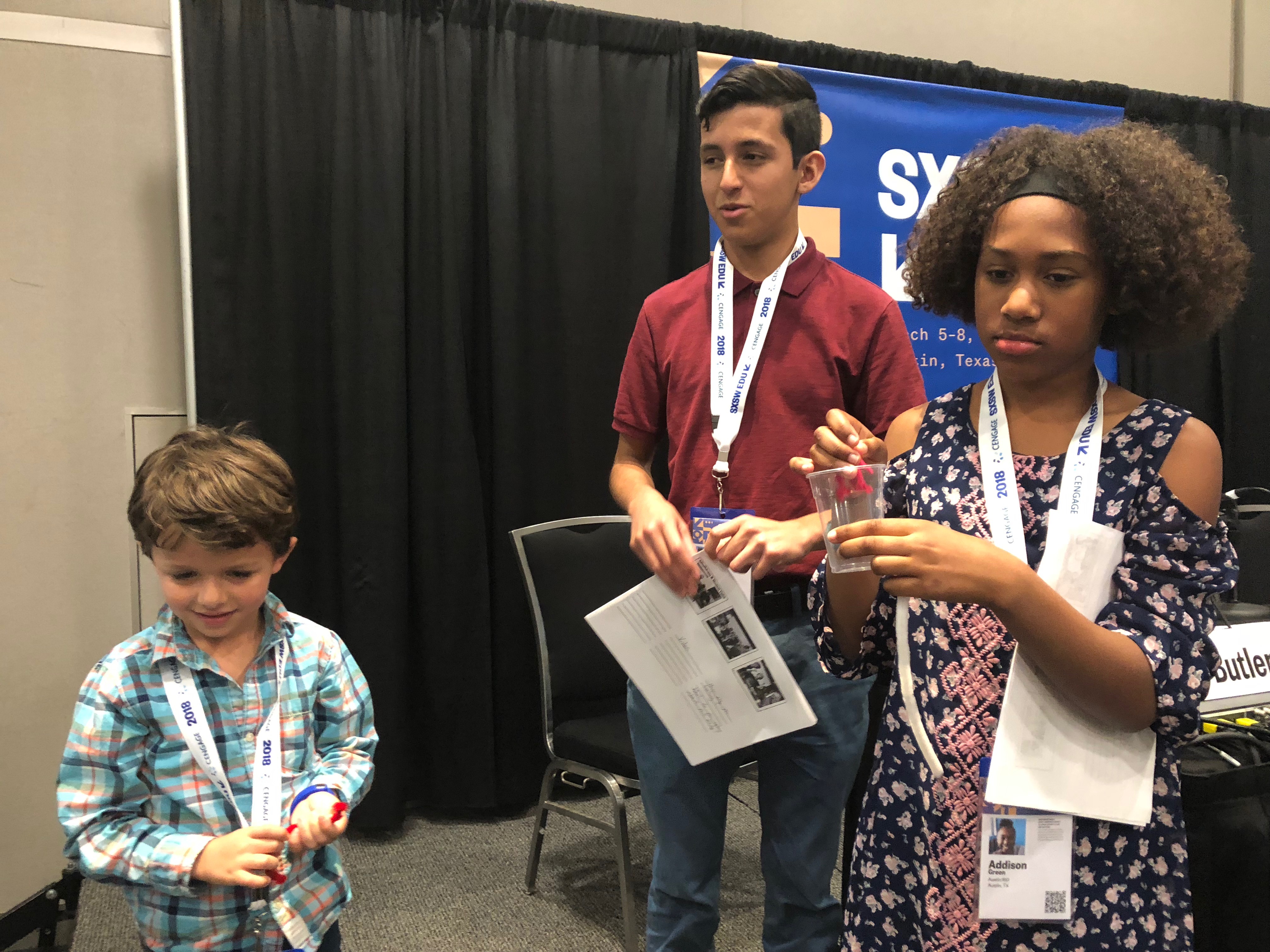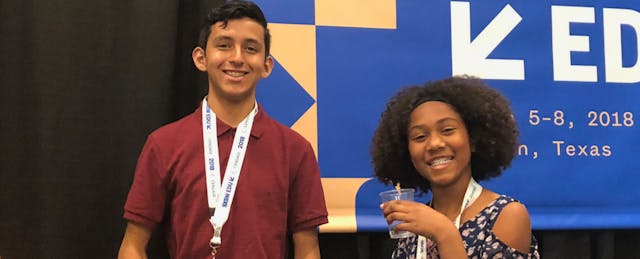Addison Green, a fifth-grade student from Austin, Texas, tells a packed room of educators at SXSW EDU that since her district added mindfulness practices to the school day, her decision making has improved.
“You can ask my school. I haven’t punched anybody, so clearly, it has helped my decision-making,” says Green.
“Have you ever thought about punching anyone?” asks her former teacher James Butler.
“Yes,” Green replies as the audience roars with laughter.
In 2016, the Austin Independent School District’s Office of Social and Emotional Learning launched a pilot to bring mindfulness practices to classrooms. Today, Butler, the new Mindfulness Specialist (yes, that’s his title) for the district, leads the practice in all 130 public schools.
What is the goal of adding mindfulness in the district? Officials say they hope the practice can help students be “present,” reducing stress, anxiety and helping them cope with traumatic experiences by incorporating breathing exercises, stretching and yoga throughout the school day. Students in the district note that they have seen differences in their educational experience.
“I think about a lot of things at once, and it helps me separate the two or three [thoughts],” says Green.
“It gets my body calmer because I’m frozen,” chimes in first-grader Teo Cardenas.

Xavier Zamarron, a junior in high school, says that before the district integrated mindfulness, he had no idea what the practice was about. But since learning exercises such as finger breathing where students take deep breaths while tracing their finger along their hands—he has been able to find uses for those techniques both inside and out of the classroom.
“The first time I went to go see my kid, I did not know if he was going to like me or not,” says Zamarron. He is a mentor in a school program called Peer Assistance and Leadership Students, and he calls his mentees his kids. “I was kind of nervous, so I just did some finger-breathing, and I started to feel calmer. My kid likes me.”
Butler hopes to continue getting students like Zamarron and Green to adopt mindfulness practices. He has visited schools, created a curriculum for educators, and also leads professional development throughout the district.
He says teachers should strive to make students from different backgrounds comfortable by not strictly regimenting what specific mindfulness exercises they need to do to become present with themselves. This means that some students might be comfortable with finger-breathing and stretching while others might prefer drawing, listening to music or keeping their eyes open while they practice. And he believes teachers need to be open to adapting, so students feel safe.
“[Mindfulness] is a powerful way to address all of our students,” says Butler. “Just sitting and breathing can be uncomfortable for people. We want to embrace and experience discomfort but in a safe way.”


